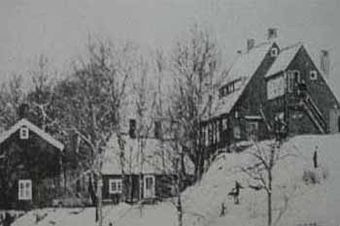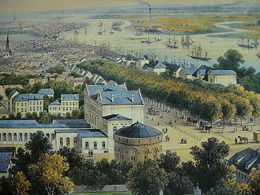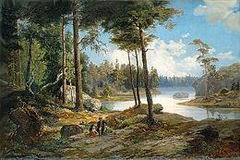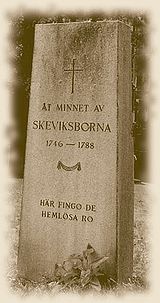
Skevikare
Encyclopedia

Radical Pietism
Radical Pietism refers to a movement within Protestantism, lasting from the late 17th century to the mid 18th century and later, which emphasized the need for a "religion of the heart" instead of the head, and was characterized by ethical purity, inward devotion, charity, asceticism, and even...
, who, after having travelled around Denmark, Germany and Holland in exile for 11 years, in 1745 returned to Sweden and formed a Christian community on the island Värmdön
Värmdön
Värmdö is an island in the innermost region of the Stockholm archipelago and covers an area of 180 km², making it the largest island in the archipelago. Värmdö is after Gotland and Öland the third largest island on the eastern coast of Sweden....
outside of Stockholm
Stockholm
Stockholm is the capital and the largest city of Sweden and constitutes the most populated urban area in Scandinavia. Stockholm is the most populous city in Sweden, with a population of 851,155 in the municipality , 1.37 million in the urban area , and around 2.1 million in the metropolitan area...
.
Intriguing history
Their history is one of the most intriguing of the radical Pietistic movement in the North. It starts about 1720 with the "Eriksson brothers" among the Swedish population of west Finland. These two former officers in the Swedish army preached the pietistic spiritual insights, and of course soon were brought before court, having denied some of the doctrines of the Lutheran Church.After a 7 year long trial they came to Stockholm in the year 1733 to be officially exiled. But instead of awaiting the final decision, they asked for permission to leave the country immediately, together with their followers, who now had grown to about 60 devoted radical Pietists. This they were granted.
The 11 year Exile

Altona, Hamburg
Altona is the westernmost urban borough of the German city state of Hamburg, on the right bank of the Elbe river. From 1640 to 1864 Altona was under the administration of the Danish monarchy. Altona was an independent city until 1937...
(then belonging to Denmark), a town were many Pietists and Mennonites were living, and could settle there. But not for long. They were too radical even for Altona, and had to leave, not finding a resting place anywhere. So they went to Holland and had about the same story there.
The Skevik period

During this time they had many visitors, and among them two of Swedens' kings, showing them the respect they were denied for so many years.
Strange practices
By the locals they were known also as the "Främlingarna", or "the Strangers", which they also called themselves, and were described as "hermites" wearing hodden coats and having long, loose hanging hair spread over their shoulders. When members of their community had died, they usually came to one of Stockholm's graveyards at night, leaving the body on the ground inside the church area's outer wall. Then the priest would bury them next day. This practice lead to the people of Stockholm beginning to tell ghost stories about that place at nights.
The Seventh Seal
The Seventh Seal is a 1957 Swedish film written and directed by Ingmar Bergman. Set during the Black Death, it tells of the journey of a medieval knight and a game of chess he plays with the personification of Death , who has come to take his life. Bergman developed the film from his own play...
".
After the movement's demise, the farm was handed over to the local authorities, and the Skevikarna were forgotten. About half a century later, a newly arrived priest to the island was handed an old handwritten journal by a parishioner. When the priest sat down at home later in the evening, to read the book, he found that the Skevikarna had recorded their whole fascinating exile story, and he later made it into a small booklet.
Much of their handwritten literature is still preserved at the Royal libraries in Stockholm and Uppsala.
With the end of the Skevikare community around 1830, the radical pietistic movement in Sweden ceased. Their story is very little known today.

